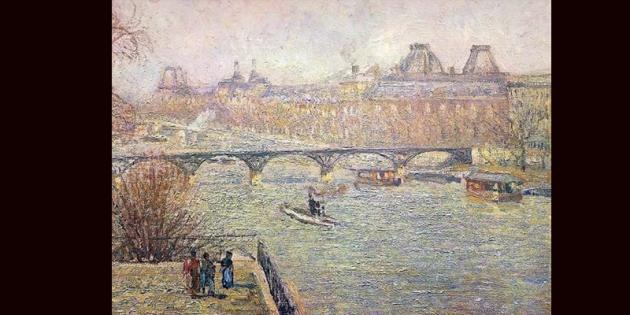The German Minister for Culture and the Media, Monika Grütters, has announced that a fourth artwork from the Gurlitt trove has been identified as Nazi loot. The oil painting is a 1902 work by Camille Pissarro. The painting, titled ‘La Seine vue du Pont-Neuf, au fond le Louvre’, was found in Gurlitt’s apartment in Salzburg. The rightful owners of the piece have already been contacted, she added.
German authorities had recently faced criticism over the handling of the restitution of the Gurlitt’s illicit trove, Süddeutsche Zeitung reported. Almost a year after Gurlitt’s death – which was presumably hastened by the stress of the case surrounding the controversial collection – only three of the one thousand works found in his possession had been identified as Nazi-looted art, none of which had been restituted.
The painting was flagged as looted by the Nazis more than a year ago. After a year of provenance research, the “Schwabing task force” has identified four artworks as looted – along with artworks by Matisse, Liebermann, and Spitzweg – the Pissarro is the latest work whose suspected status as Nazi loot has now been determined.
The lengthy legal procedures have been widely criticised by the heirs to various works from the ‘Munich Art Trove’, the return of the looted artworks by Matisse and Liebermann is already underway, and the restitution of the painting by Spitzweg to its rightful owners is expected to be settled shortly.
Cornelius Gurlitt was the son of a notorious Nazi art dealer whose secret collection included many Third Reich looted pieces, died last year aged 81. He passed away on the 6th May in his Munich apartment, which was used to store 1,400 valuable works of art including Picasso, Matisse and Monet masterpieces said to be worth in excess of 800 million euros.
Before his death, Gurlitt had agreed that if works were shown to have been looted by the Nazis they should be returned to the heirs of their rightful owners. Many people, particularly Jewish groups felt that the works should be liable to restitution.
Hildebrand Gurlitt, Cornelius’ father was a Nazi approved art dealer entrusted by the Third Reich to confiscate valuable works of art from Jewish families to be sold for the war effort. At the same time he amassed his own private collection dying in 1956. In the half century following his death his son continued to preserve the collection built up in the 20s, 30s and 40s.
Image: Kunstmuseum Bern via bundesregierung.de

